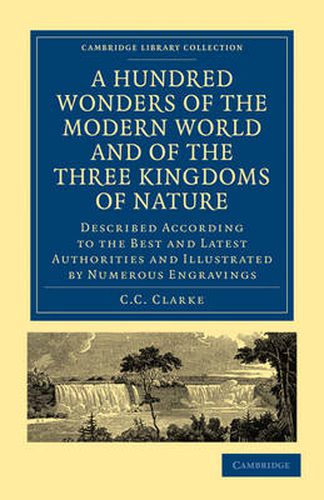Readings Newsletter
Become a Readings Member to make your shopping experience even easier.
Sign in or sign up for free!
You’re not far away from qualifying for FREE standard shipping within Australia
You’ve qualified for FREE standard shipping within Australia
The cart is loading…






Sir Richard Phillips (1767-1840) was a London-born author and publisher of educational textbooks who used a vast array of pseudonyms, including that of Reverend C. C. Clarke. Phillips’ marketing techniques - the systematic borrowing of famous (living or deceased) authors’ names for his textbooks, along with the multiplication of easy to produce related educational products - were key to his success. No doubt meant as an accessible encyclopaedia, this 40th edition of 1834 - attributed to Phillips himself - is a surprisingly vast and heterogeneous survey, which compiles natural and man-made curiosities across the world. The Himalayas and Mont Blanc share a chapter with the Peak of Derbyshire; famous rivers lead to mysterious subterranean forests; and Stonehenge is closely followed by St Paul’s cathedral. Halfway between reference book and textbook, this richly illustrated volume is a fascinating catalogue of the world’s wonders as perceived in the early nineteenth century.
$9.00 standard shipping within Australia
FREE standard shipping within Australia for orders over $100.00
Express & International shipping calculated at checkout
Sir Richard Phillips (1767-1840) was a London-born author and publisher of educational textbooks who used a vast array of pseudonyms, including that of Reverend C. C. Clarke. Phillips’ marketing techniques - the systematic borrowing of famous (living or deceased) authors’ names for his textbooks, along with the multiplication of easy to produce related educational products - were key to his success. No doubt meant as an accessible encyclopaedia, this 40th edition of 1834 - attributed to Phillips himself - is a surprisingly vast and heterogeneous survey, which compiles natural and man-made curiosities across the world. The Himalayas and Mont Blanc share a chapter with the Peak of Derbyshire; famous rivers lead to mysterious subterranean forests; and Stonehenge is closely followed by St Paul’s cathedral. Halfway between reference book and textbook, this richly illustrated volume is a fascinating catalogue of the world’s wonders as perceived in the early nineteenth century.